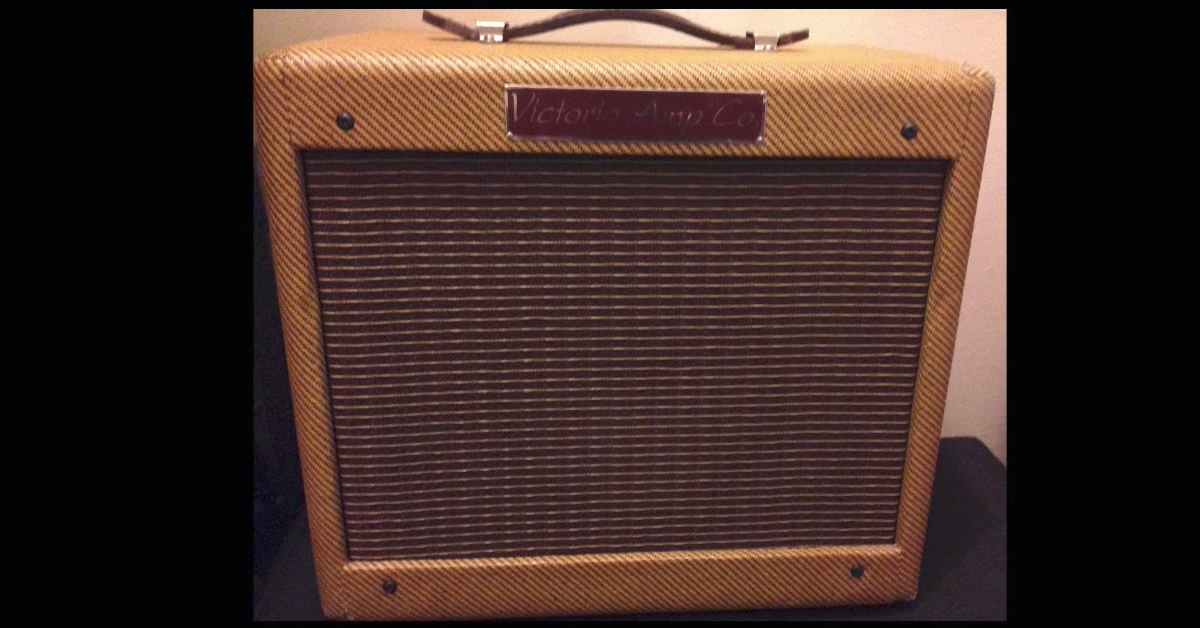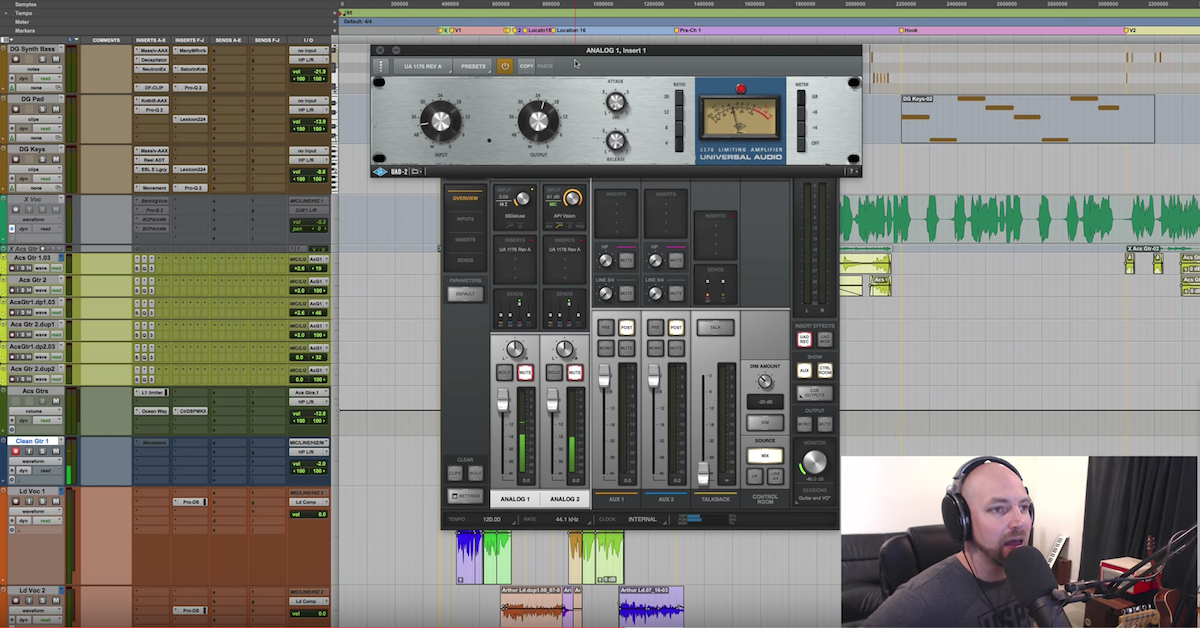The Basics of Electric Guitar Pickups
Article Content
Choosing the right pickups can be confusing. Not only are there several families of pickups, but there are many variations within those families whose differences can be elusive to the average guitarist.
My goal with this article is to steer you in the right direction by clarifying the pickup families and their variations.
One of the most frustrating things about trying new pickups is that you can’t just pop them in. They require soldering and sometimes routing; this can slow people down and even discourage experimentation.
What is a Guitar Pickup?
Some of you might be wondering what an electric guitar pickup is. The simplest way to grasp their design and purpose is to think of them as being microphones that sit underneath the guitar strings in order to amplify them. When we think in this manner it will make more sense in the variations of sound and quality.
Pickup Basics
The two main pickup families are single-coil and humbucking pickups. I’m going to skip the lesson in science and math. There is a lot of online information already available on the technical specs of pickups. I want to focus on the sound!
Most players associate single coils with the pickups that come in Stratocasters. And most players associate humbuckers with the Gibson Les Paul (although the first version of the Les Paul had P90s, which are a type of single-coil pickup).
The single coil was the first pickup, designed in the mid-1920s by George Beauchamp. The humbucker was created in the 1950s to fix an inherent problem with single-coil pickup design: the 60-cycle hum.
Anyone who’s played a Tele or Strat knows that they can be noisy in some environments. Humbuckers are designed to eliminate the hum. Get it? … hum-bucking.
Humbuckers use two coils wrapped together. One coil is out of phase with the other, which cancels out the hum.
Humming Bird
There is a bit of controversy as to who invented the humbucker. It’s widely accepted that Ray Butts invented the humbucker pickup that ended up in Gretsch guitars, known as Filtertrons.
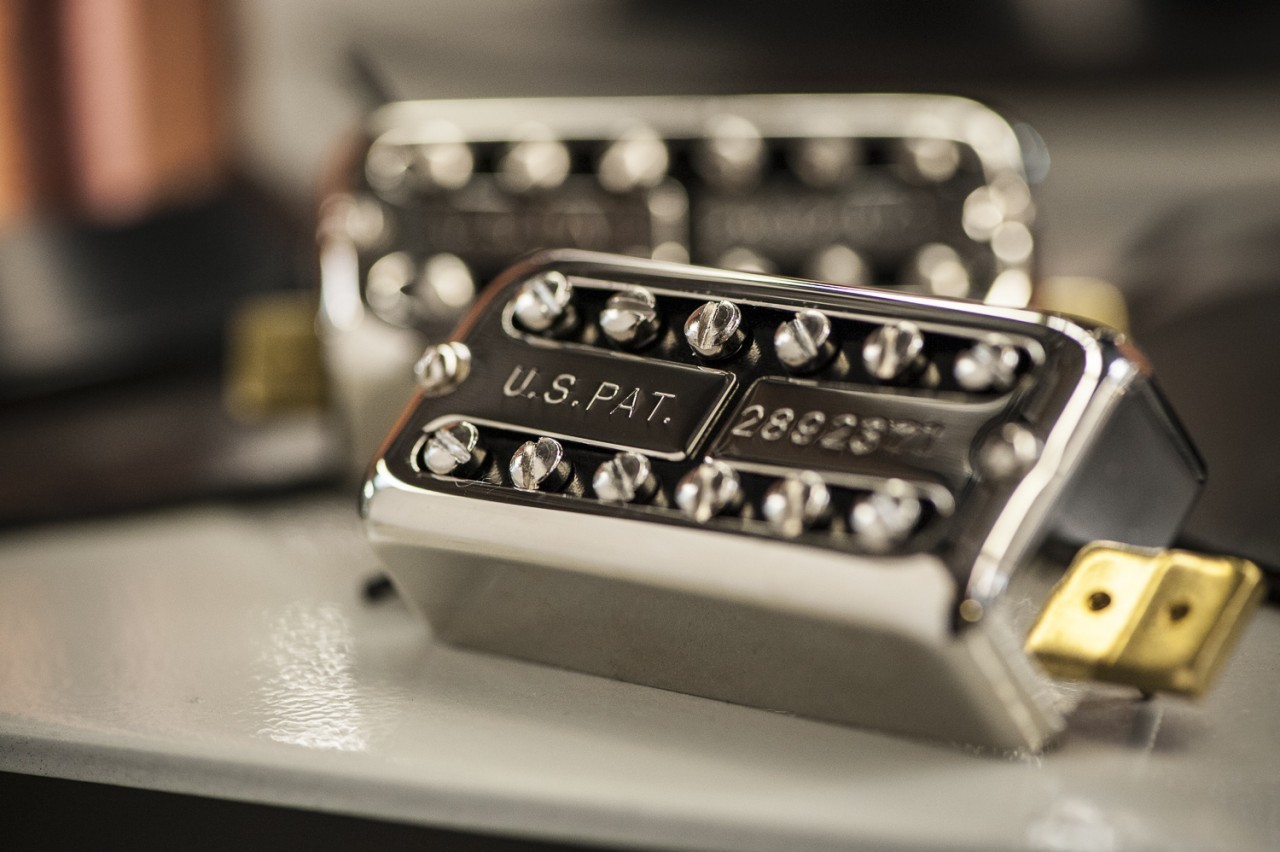
Gretsch Filtertron
Seth Lover at Gibson was working on a similar design at the same time and managed to file a patent first, even though it appears that Ray invented his version first. The Seth Lover versions were marketed as humbuckers and early, coveted releases have a PAF (patent applied for) label on them.
Both versions eliminated the 60-cycle hum, but each was designed and sounded slightly different.
Ok, that’s today’s history lesson. Let’s talk tone.
Single Coils
There are a lot of single coil pickup variations. The most popular one is used in the ever-so-popular Fender Stratocaster.
Traditional Fender Telecasters also use single coils. The neck pickup although looks like a ‘lipstick’ is just a single coil with a cover.
A lipstick pickup is a single coil at heart, but with some design variations. The lipstick design that is common on Danelectro and Silvertone guitars was invented by Nathan Daniel, who later founded Danelectro Guitars.
A lipstick pickup is wrapped coil around an Alnico VI bar magnet which is then wrapped in tape before being placed in it’s metal tube. Oh, I just used the confusing “A” word … time for a sidebar.
Where Telecaster neck pickups can sound a little dull, lipsticks are bright and jangly.
Alnico vs. Ceramic
Alnico is an alloy created from aluminum, nickel and cobalt. Alnico magnets are more costly to make than magnets made of ceramic — the more traditional material. But let’s not allow the cost of manufacturing to cloud our brains.
Alnico magnets range from Alnico IIs to Alnico VIIIs. Each Roman numeral signifies a specific magnet strength — generally (but not always), the higher the number, the higher the output.
Alnico magnets tend to have a more organic tone and are sweeter sounding. Ceramic magnets can get a little raunchy because they’re stronger magnets.
You could say Alnico are more flexible. That is unless your sound revolves around high-output tones. In which case you might love ceramic.
Ceramics have a very different flavor from Alnico pickups, even if they’re both producing the same output.
Lip-Smacking Good
Ok, back to the lipstick. We know that they’re Alnico because they’re encased in an aluminum tube and tend to produce less volume.
Lower output is not a bad thing, though!
Single coil pickups are associated with a twangy sound. It’s the reason so many country guitarists play Fender. This twang or snap is replaced by warmth and depth in a humbucker.
Single-coil pickups drive an amp a little less, too. Using a humbucker-style pickup will overdrive your amp faster — desirable to some but not to others.
Of course, the drive has a lot to do with a pickup’s output. But in general, single-coil pickups have less output than humbuckers.
Potting
Potting pickups prevents them from being microphonic. There are several ways that manufacturers pot pickups, but the common practice is to dip them in wax. This prevents high-squeal feedback.
There’s a divide here — not all players hate microphonic pickups … I happen to love them. To me, the instrument feels more alive and delicate. When you tap on the body of a guitar with microphonic pickups, you can hear it through the amp. The guitar becomes very touch-sensitive. But it can be problematic at high stage volumes or if you play with lots of gain. I have a 1964 Guild Starfire with microphonic DeArmond humbuckers. I love the interaction I get with that instrument.
Fender potted its pickups in the ’50s and ’60s. It used either lacquer or wax, depending on the era. Some Fenders have become microphonic as they’ve aged, as the potting has disintegrated.
Xotic Guitars (made by hand in California) doesn’t pot its pickups. They want their customers to have as much interaction with the instrument as possible.
Let’s look at some pictures from the Xotic factory.
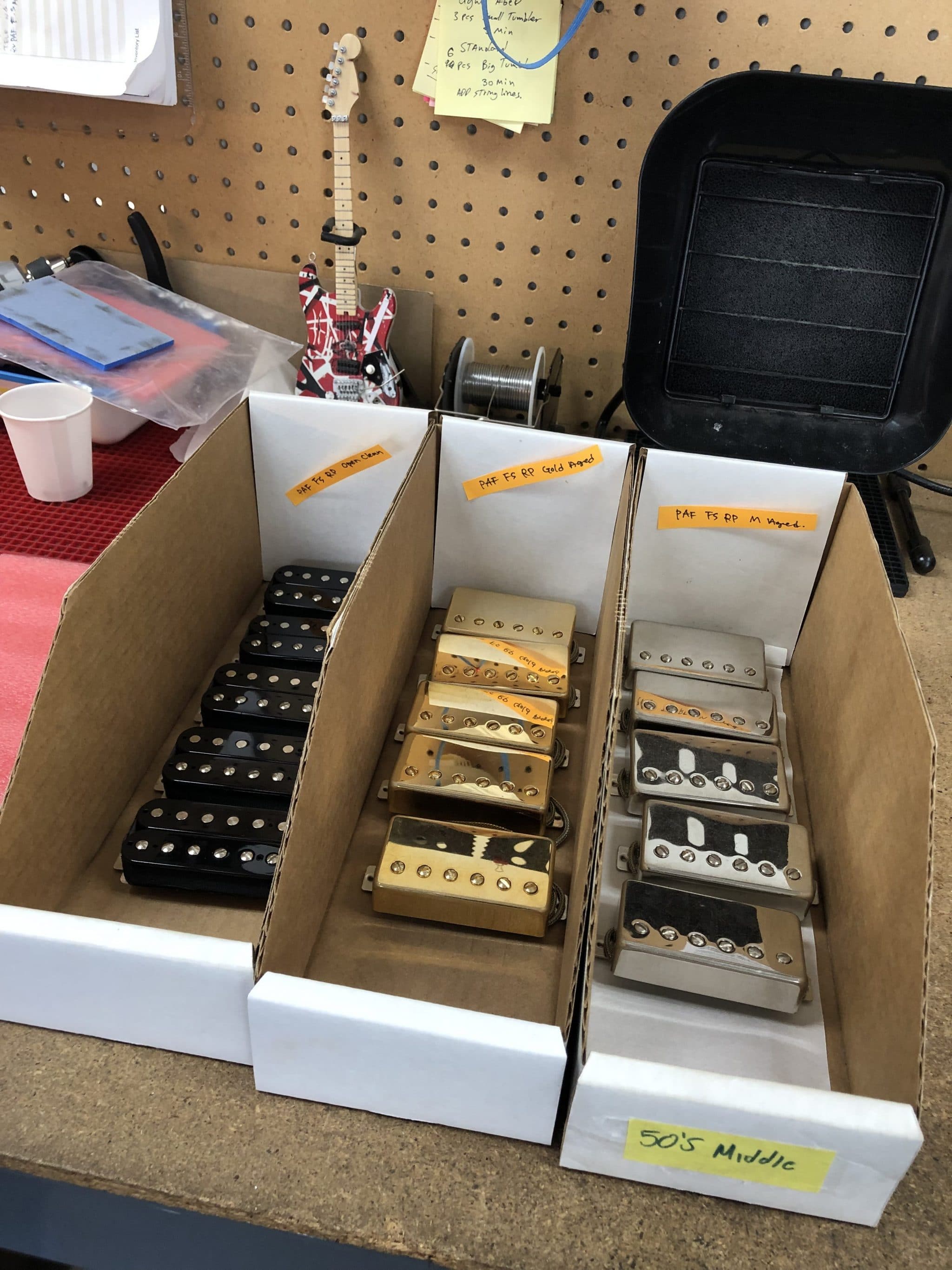
Xotic Humbuckers in process
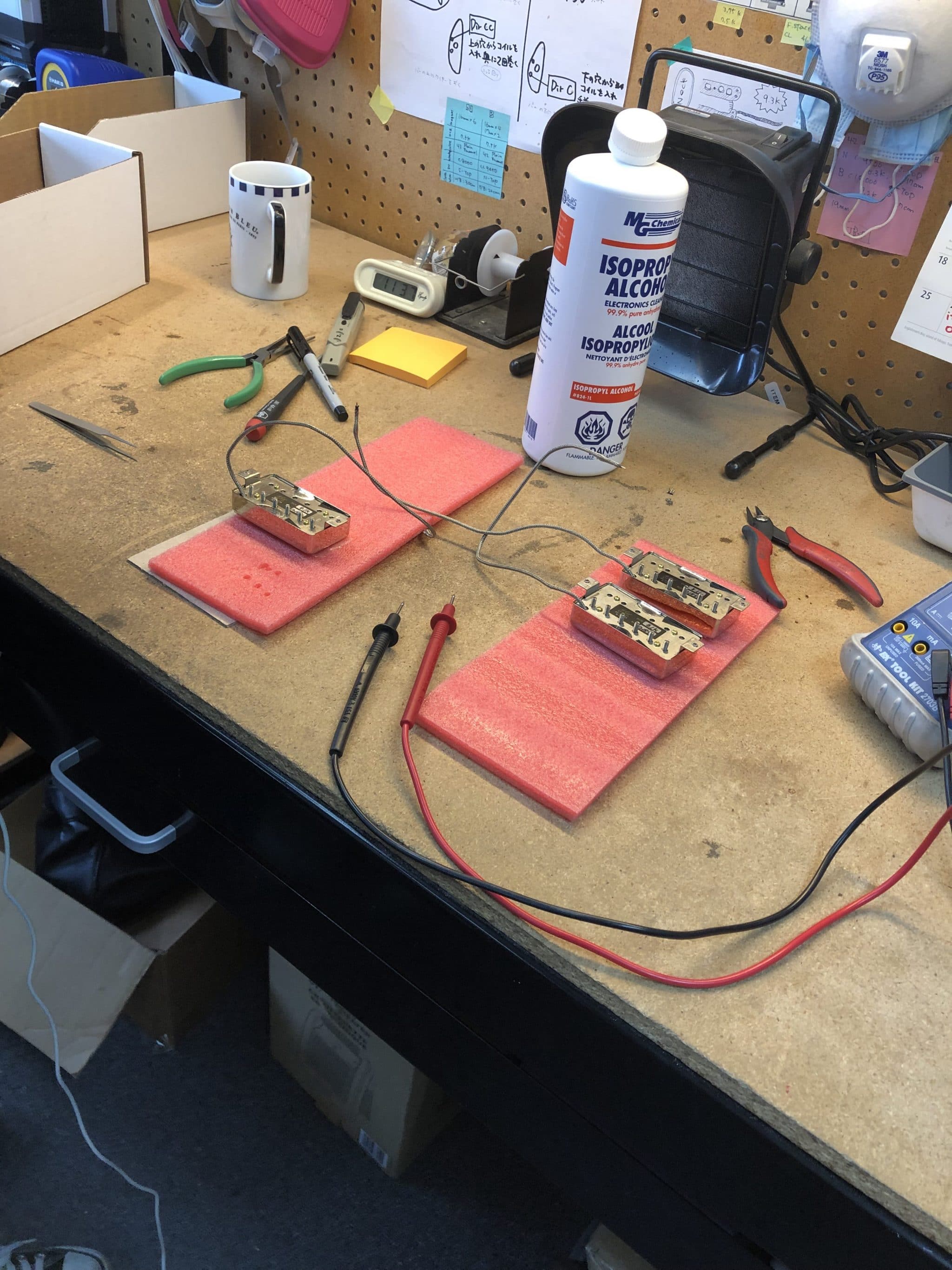
Xotic humbuckers being assembled
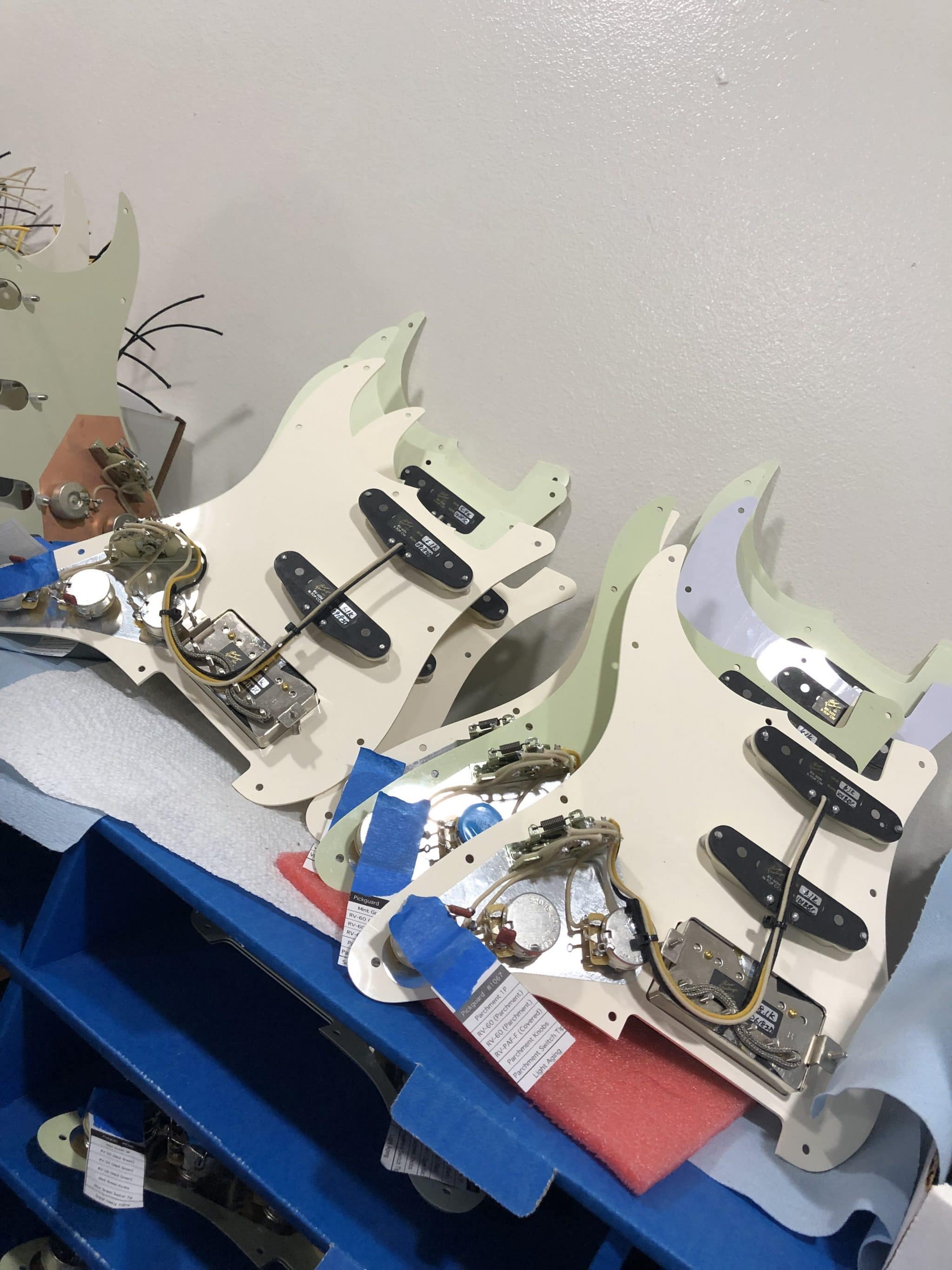
Xotic pickguard assembly in process
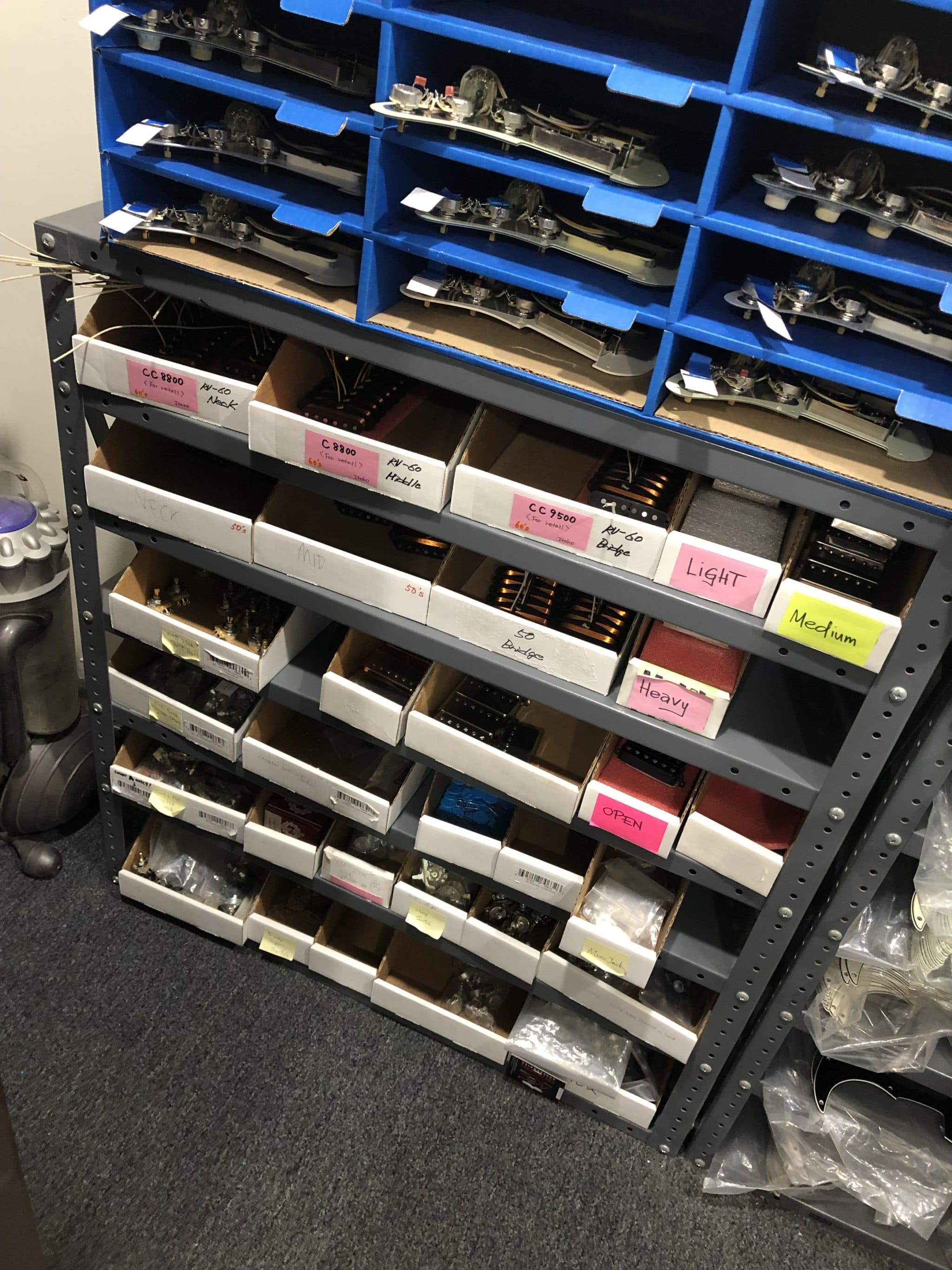
Completed Xotic pickup assembly
These days, most manufacturers pot their pickups as they don’t want complaints from customers. The non-potted community is a specific tribe of guitarists who are into a vintage tone. Builders like FSC are winding pickups as if they had a time machine and went back to 1959.
Coil Winds
I’m sure many of you have heard chatter about the windings in pickups. Basically, the wire is wrapped around a bobbin. The more winds of wire, the more output a pickup will have.
With increased volume or output comes a change in sound. The more winds, the more midrange is enriched which also reduces treble and bass. This is why really hot pickups are very midrange-centric. There is a little wiggle room here depending on the gauge of wire a pickup maker uses. Some pickup designers will adjust the gauge of wire to increase output but tame the midrange flood.
If you’re into hot pickups, it’s worth investigating the differences between gauges of wire. How pickups are wound can also vary the tone. I’ve had conversations with FSC Instruments, Gemini Pickups, and Xotic about their philosophies on winding. Here is a toaster pickup wound by Gemini:
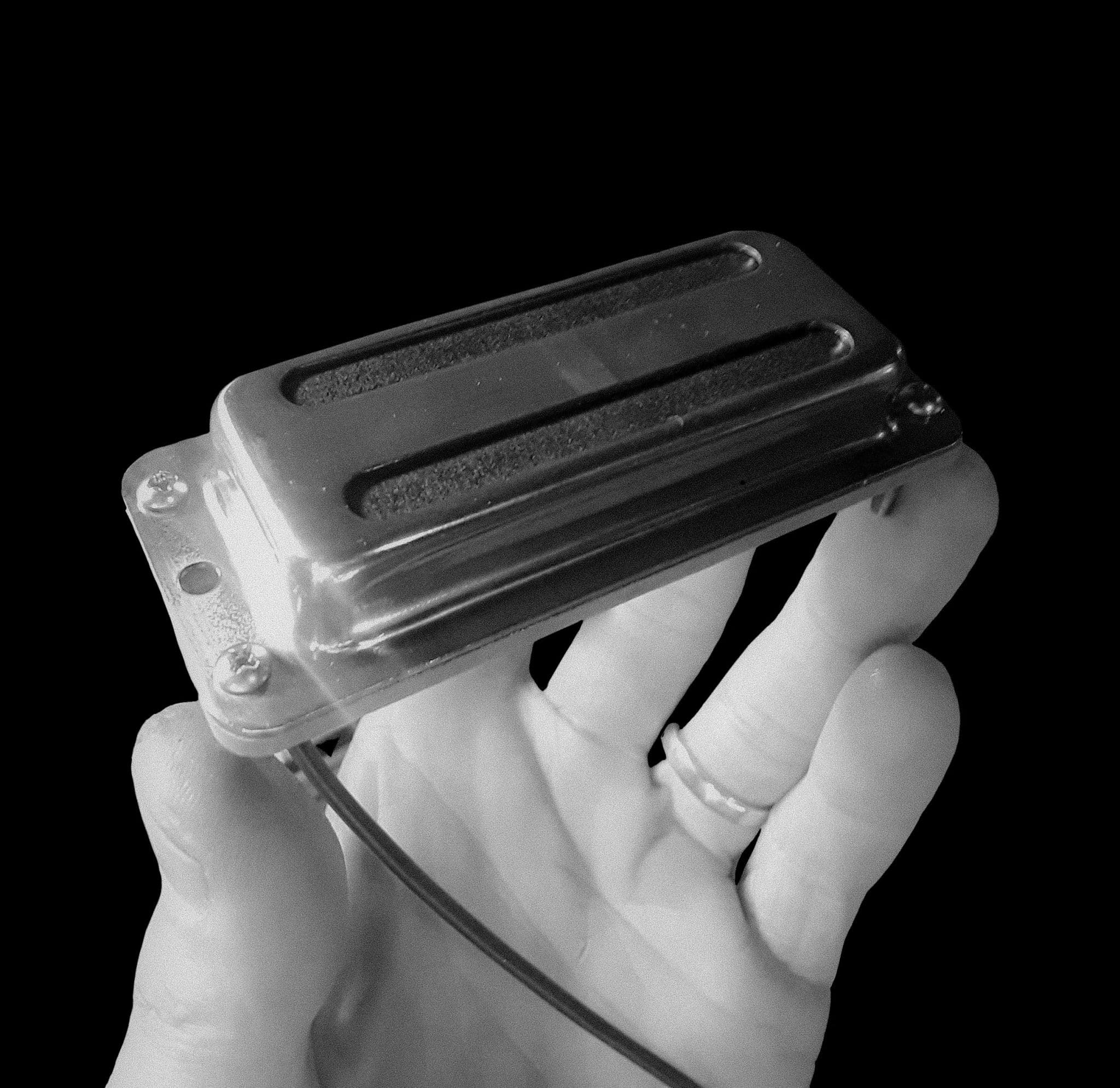
Gemini Pickups Toaster Pickup
Types of Winding
Pickups can have as many as 8,000 to 10,000 winds. This time-consuming process means that very few pickups are truly hand-wound. For boutique builders such as Xotic, Gemini, and FSC, the process is not automated. Their pickups are all hand-wound. And you guessed it — the looseness or tightness of the wind will change the tone.
Old is New
The truth is, there were a lot of inconsistencies in vintage pickup production. The significant human element in their production introduced a lot of variables. Not every 1957 Stratocaster sounds the same, because they’re not made the same. Each piece of wood is unique and resonates differently. But even beyond that, these vintage pickups varied quite a bit.
As I mentioned earlier, how tight or loose a pickup is wound will change the sound. Another term you may have heard is “scatter wound”. This method adds randomness to the winding process. Meaning, each wind isn’t precisely placed. This uneven winding resulted in some very special pickups from the ’50s era of guitars. The only way to scatter wind a pickup is by hand. Scatter winding tends to result in a more airy tone, as the winding won’t be as tight as machine-wound. FSC Instruments and Gemini lean toward scatter wound. Xotic hand winds but prefers not to scatter wind.
The thing to remember is that back in the day, scatter winding wasn’t a “method” as much as plain human error. A very musical error, but an error nonetheless. Scatter wound pickups are likely to have less capacitance than machine-wound. This means more high-end response, which is often desirable. But it doesn’t mean machine or non-scattered, hand-wound sound terrible.
FSC Instruments uses Alnico V magnets and heavy Formvar 42 AWG wire lightly potted in candle wax and scatter wound. They range in output from the high side of 5k to the low side of the 6k range of output. I have a set of FSC ‘59s. They are 5.81k in the neck, 6.05k in the middle, and 6.40k in the bridge.
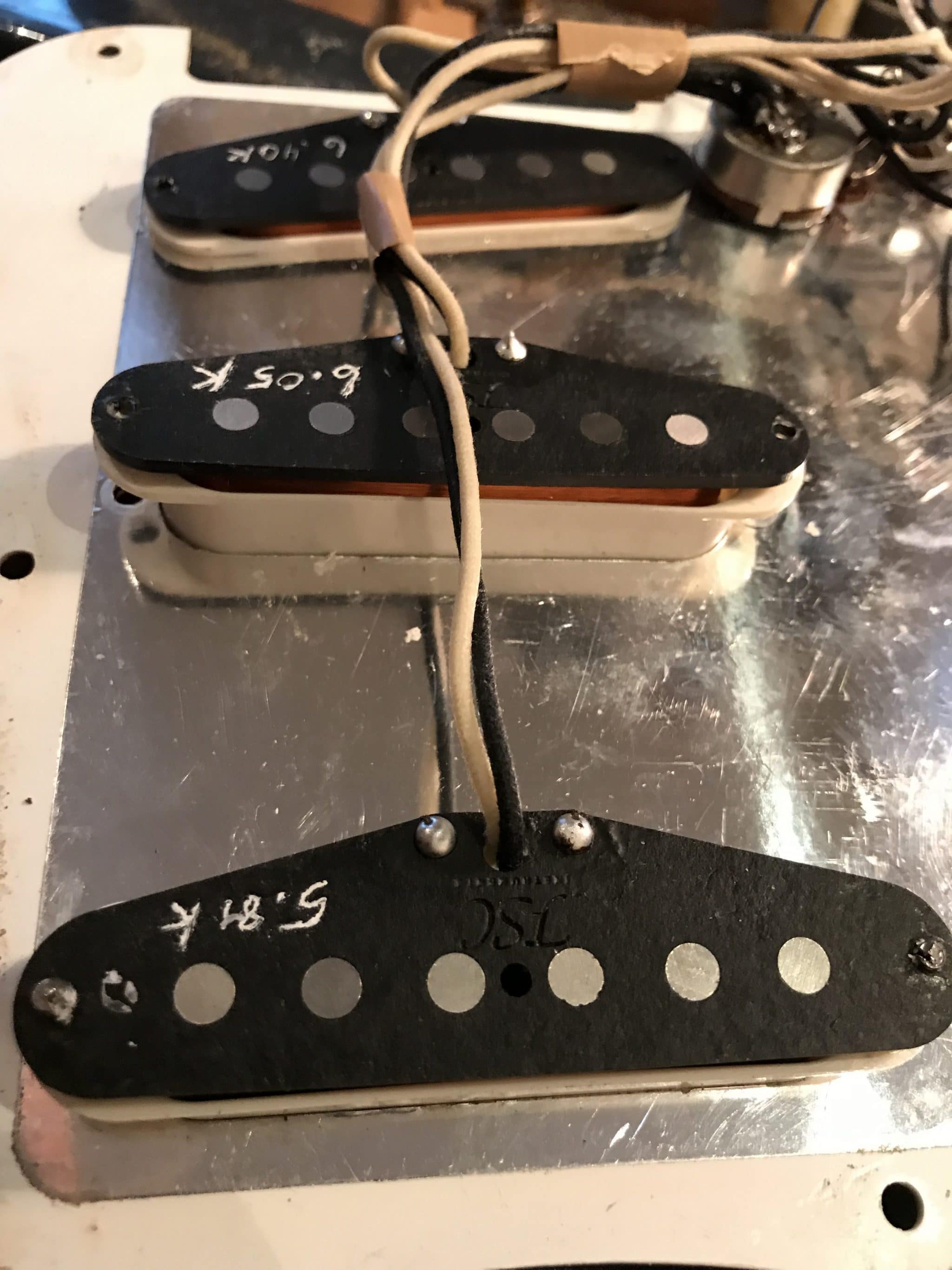
FSC 59’s Pickup assembly
Xotic uses Alnico V magnets: 41 AWG to 43 AWG wire, hand-wound fairly loosely with no potting. They range from 5.4k to 6.6k. Even just looking at these two examples, we can tell immediately that they will sound differently, although they use the same magnets. The same variations exist in humbuckers and other pickups. So, it’s worth doing some research when considering your options.
Let’s listen to a few examples of stock strat pickups in comparison to FSC scatter wound pickups. I recorded the stock strat examples before I swapped out the pickups on my strat. All examples are with the same guitar and same set of DR Pure Blues guitar strings gauge 10-46.
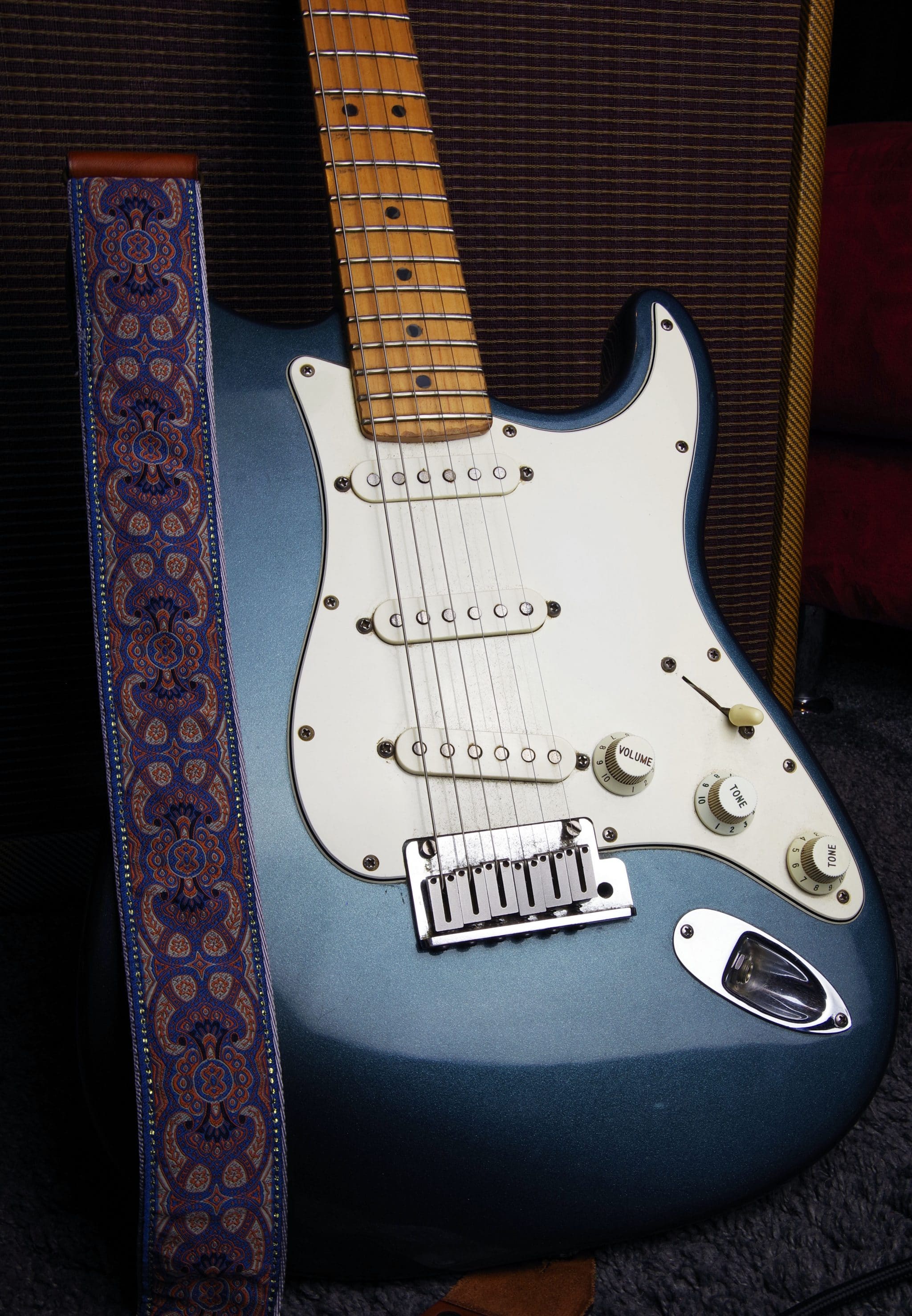
Fender American Stratocaster with stock pickups
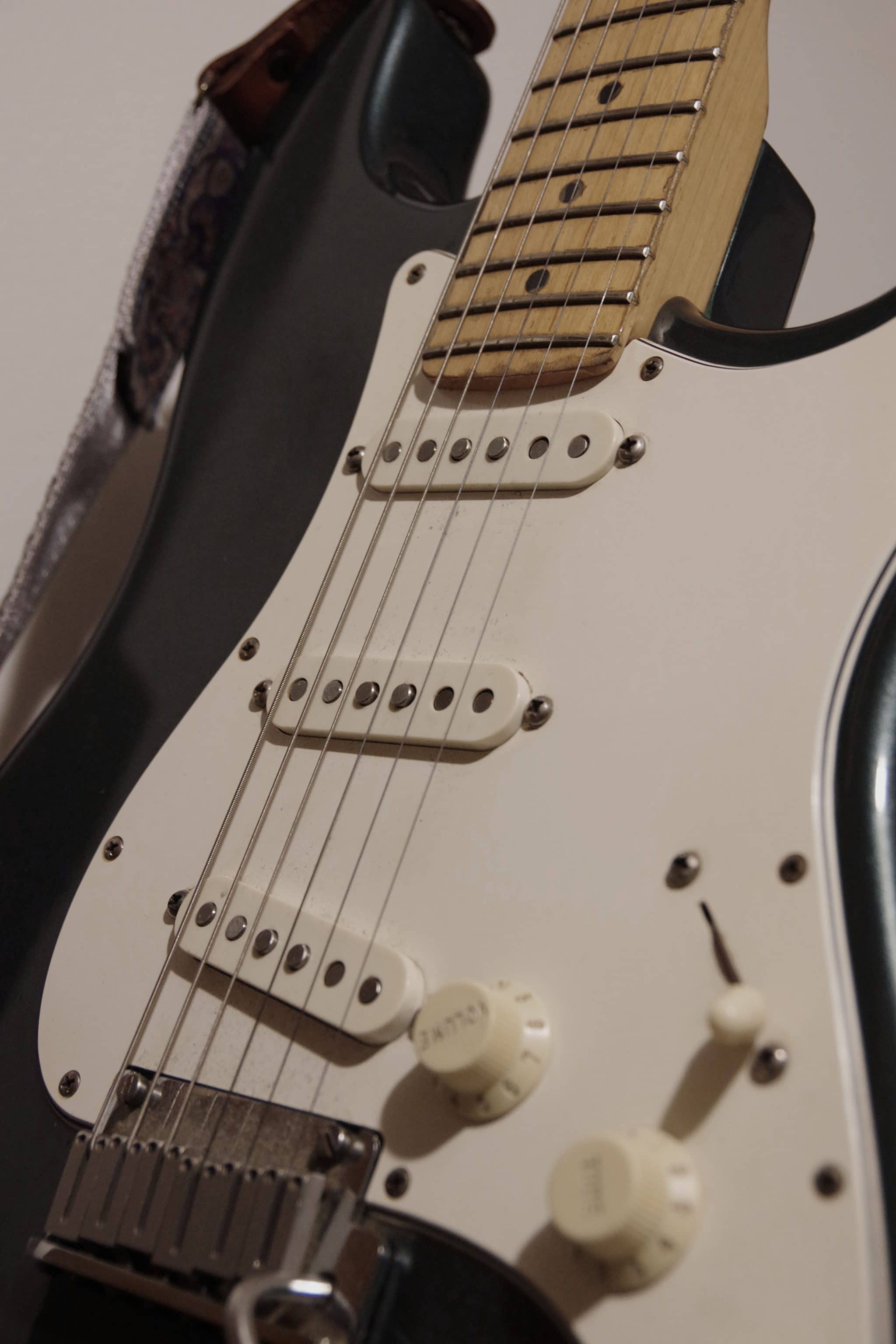
Fender American Standard Stratocaster with FSC 59’s pickups installed
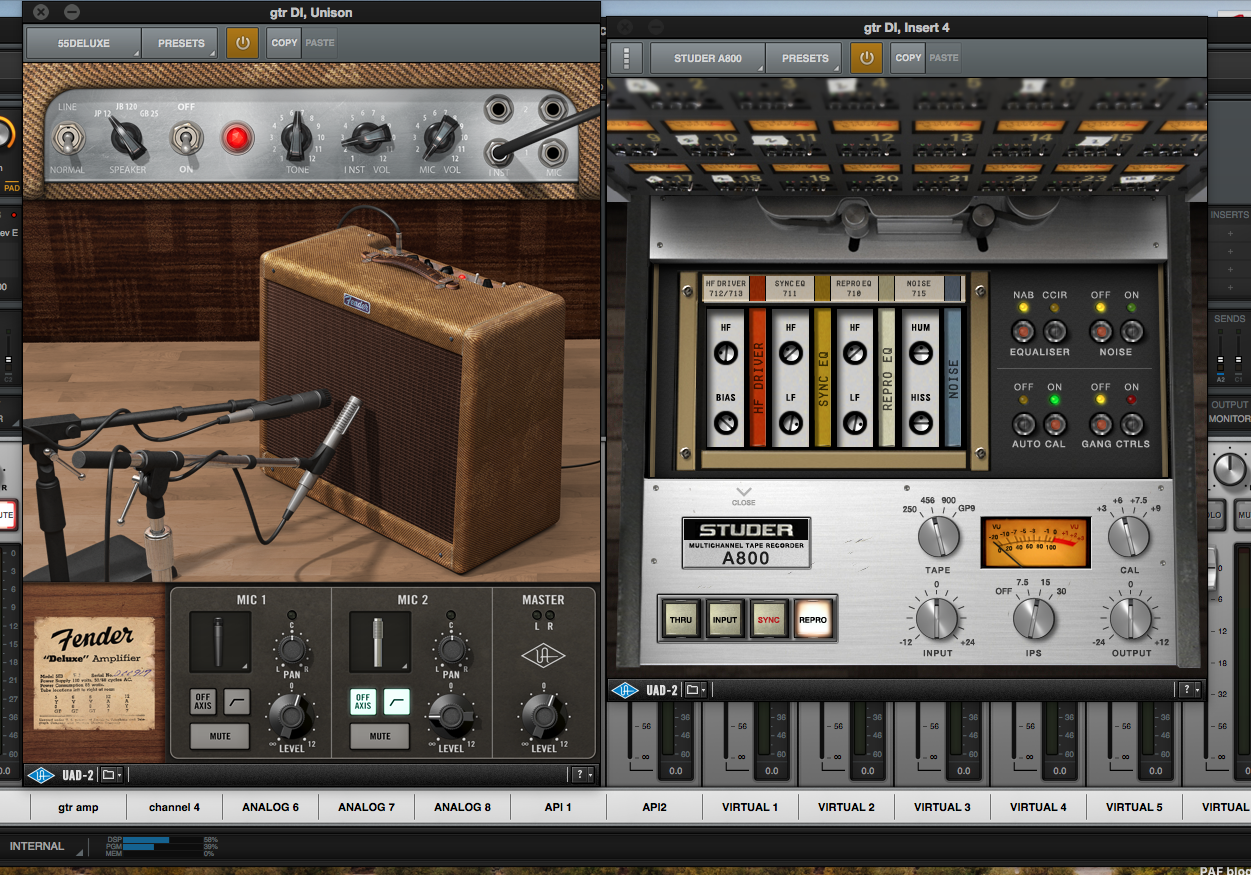
UAD Fender ’55 Tweed and UAD Studer A800 Tape Machine Emulation
Example 1a: Strat Stock into a UAD Apollo using the Fender ’55 Tweed amp sim
Example 1b: FSC Pickups into a UAD Apollo using the Fender ’55 Tweed amp sim
Example 1c: Strat Stock into a UAD Apollo using DI signal only
Example 1d: FSC Pickups into a UAD Apollo using DI signal only
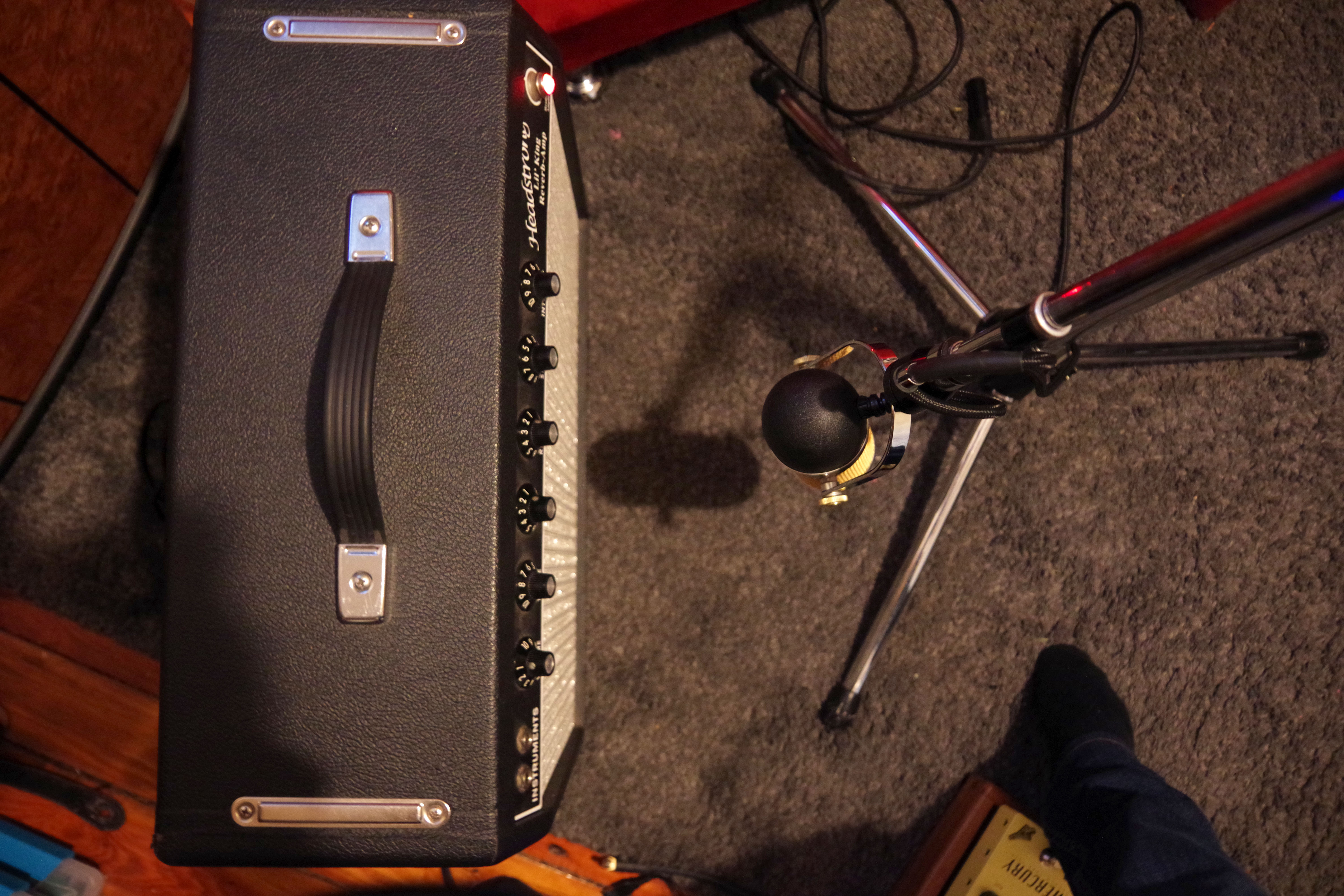
Headstrong ‘Lil King Reverb miked with an AEA A848 ribbon mic view from the top
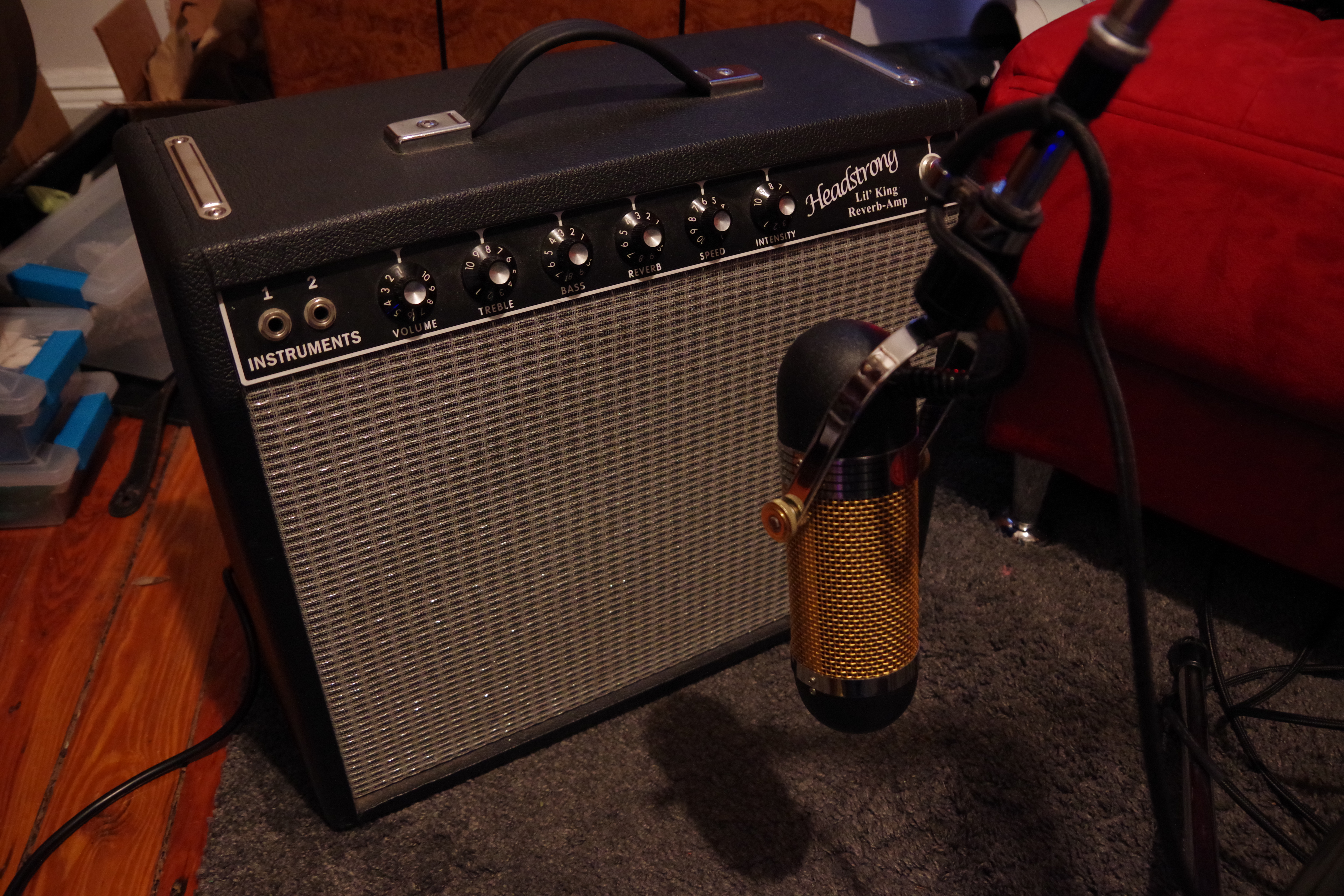
Headstrong ‘Lil King Reverb miked with an AEA A848 ribbon mic view from the front
Example 1e: Strat Stock into a Headstrong ‘Lil King Reverb running at 117v with the Brown Box miked with an AEA A-840 ribbon mic into a UAD Apollo using the Neve 1073 mic preamp sim
Example 1f: FSC Pickups into a Headstrong ‘Lil King Reverb running at 117v with the Brown Box miked with an AEA A-840 ribbon mic into a UAD Apollo using the Neve 1073 mic preamp sim
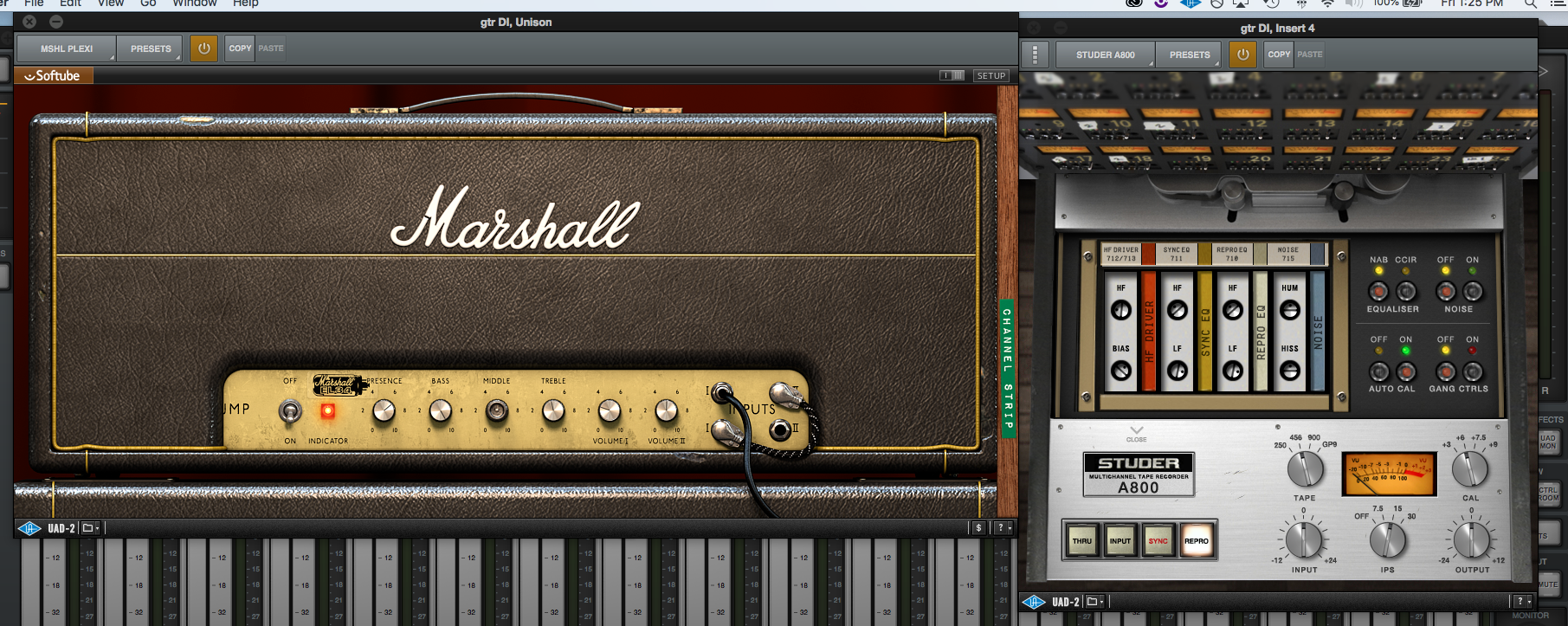
UAD Marshall Amp Sim and UAD Studer A800 Tape Machine Emulation
Example 2a: Strat Stock into a UAD Apollo using the Marshall Plexi Super Lead amp sim
Example 2b: FSC Pickups into a UAD Apollo using the Marshall Plexi amp sim
Example 2c: Strat Stock into a UAD Apollo using DI signal only
Example 2d: FSC Pickups into a UAD Apollo using DI signal only
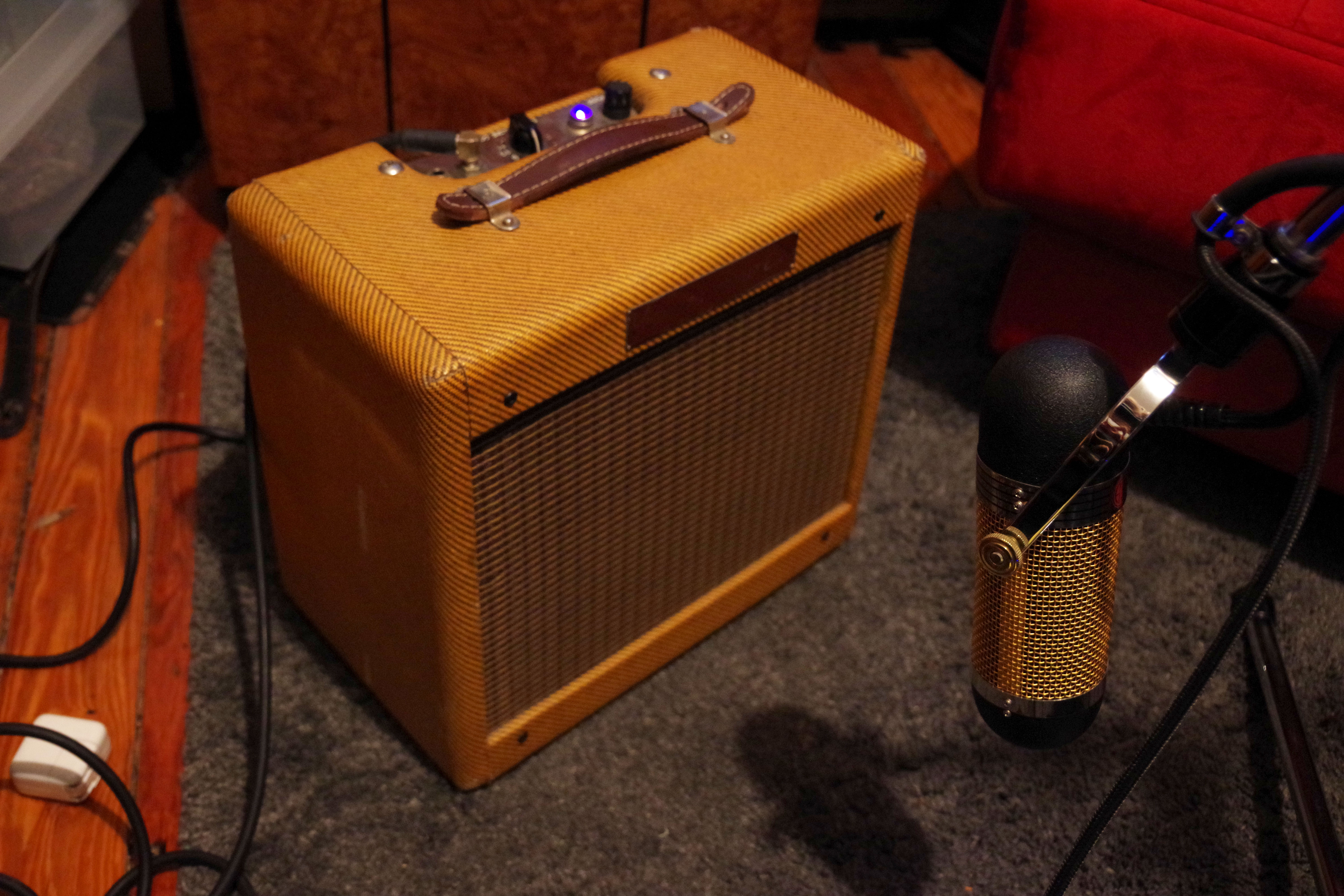
Victoria 518 miked with an AEA A848 ribbon mic view from the front
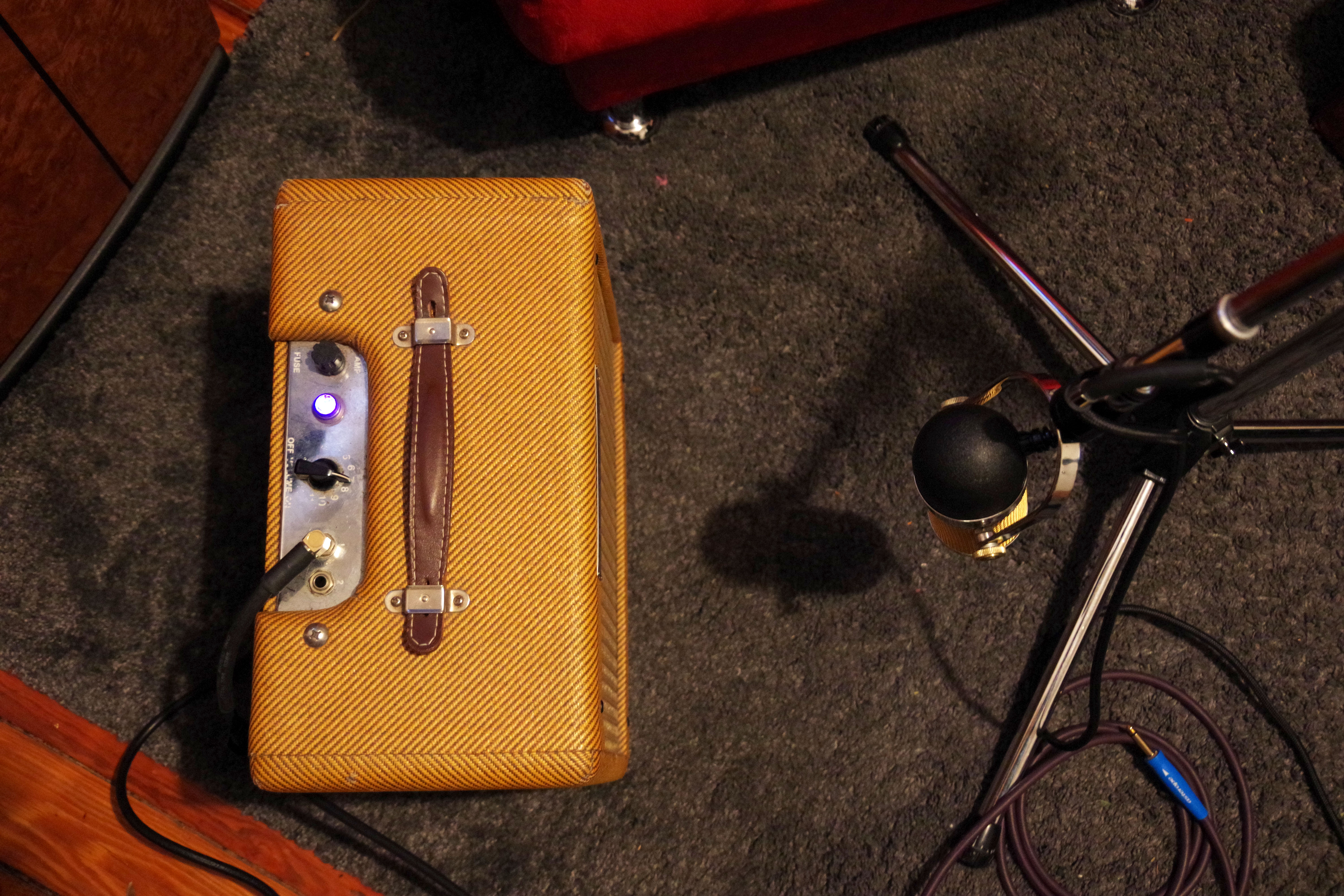
Victoria 518 miked with an AEA A848 ribbon mic view from the top
Example 3a: Strat Stock into a Victoria 518 tweed Champ running at 117v with the Brown Box miked with an AEA A-840 ribbon mic into a UAD Apollo using the Neve 1073 mic preamp sim and Studer A800 plugin
Example 3b: FSC Pickups into a Victoria 518 tweed Champ running at 117v with the Brown Box miked with an AEA A-840 ribbon mic into a UAD Apollo using the Neve 1073 mic preamp sim and Studer A800 plugin
Example 3c: Strat Stock into a UAD Apollo using DI signal only
Example 3d: FSC Pickups into a UAD Apollo using DI signal only
Example 4a: Strat Stock into a Victoria 518 tweed Champ running at 117v with the Brown Box miked with an AEA A-840 ribbon mic into the UAD Apollo using the Neve 1073 mic preamp sim and Studer A800 plugin
Example 4b: FSC Pickups into a Victoria 518 tweed Champ running at 117v with the Brown Box miked with an AEA A-840 ribbon mic into a UAD Apollo using the Neve 1073 mic preamp sim and Studer A800 plugin.
Example 4c: Strat Stock into a UAD Apollo using DI signal only
Example 4d: FSC Pickups into a UAD Apollo using DI signal only
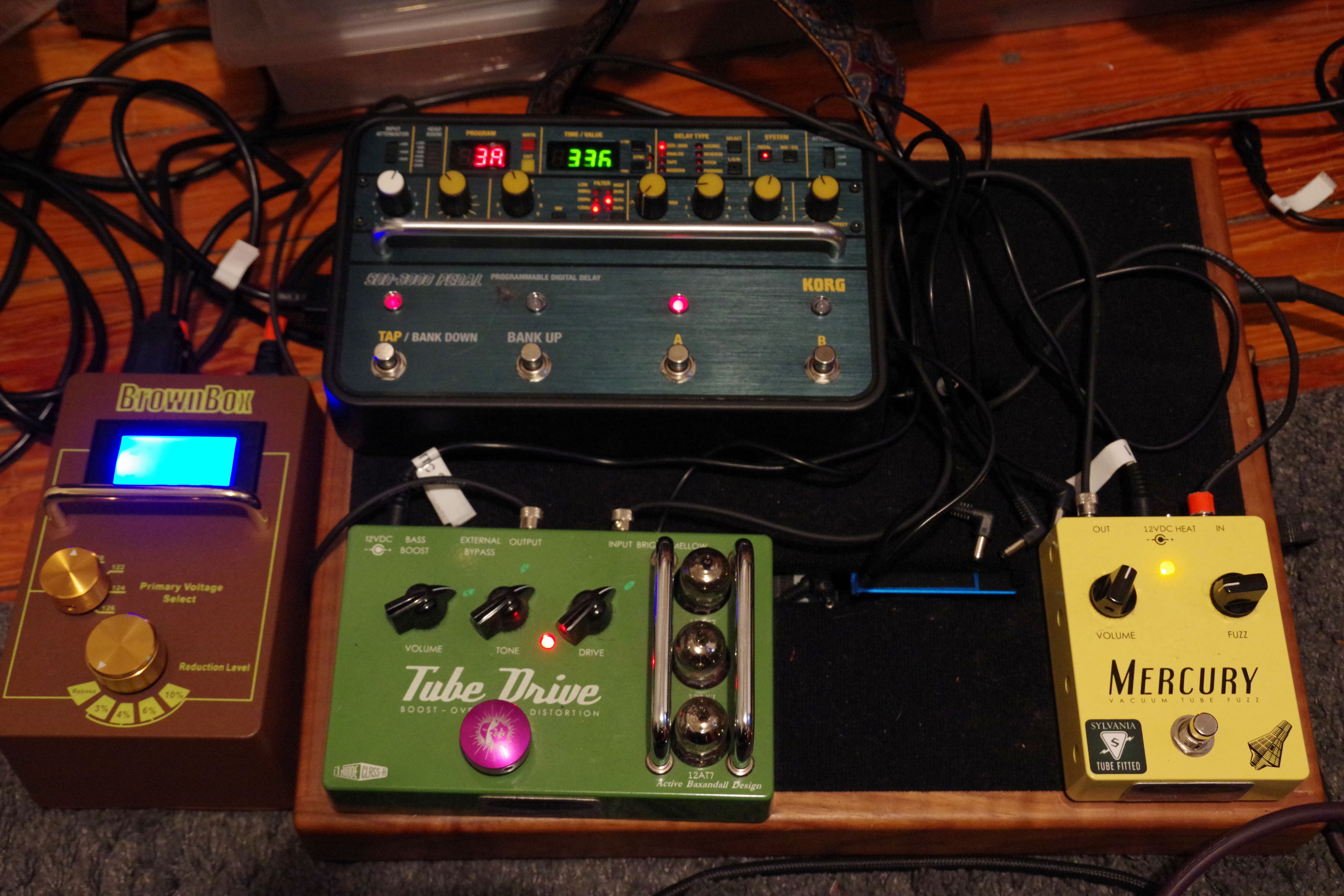
Brown box, Effectrode tube drive, Effectrode Mercury fuzz, Korg SDD-3000 delay
Example 5: FSC Pickups into an Effectrode Mercury Fuzz into an Effectrode Tube Drive into a Korg SDD-3000, into a Vox AC15 running at 117v with the Brown Box miked with an AEA A-840 ribbon mic, into a UAD Apollo using the Neve 1073 mic preamp sim and Studer A800 plugin
Example 6: FSC Pickups into a Headstrong ‘Lil King Reverb running at 117v with the Brown Box miked with a Soyuz the Bomblet condenser mic into a UAD Apollo using the API Vision mic preamp sim and Studer A800 plugin
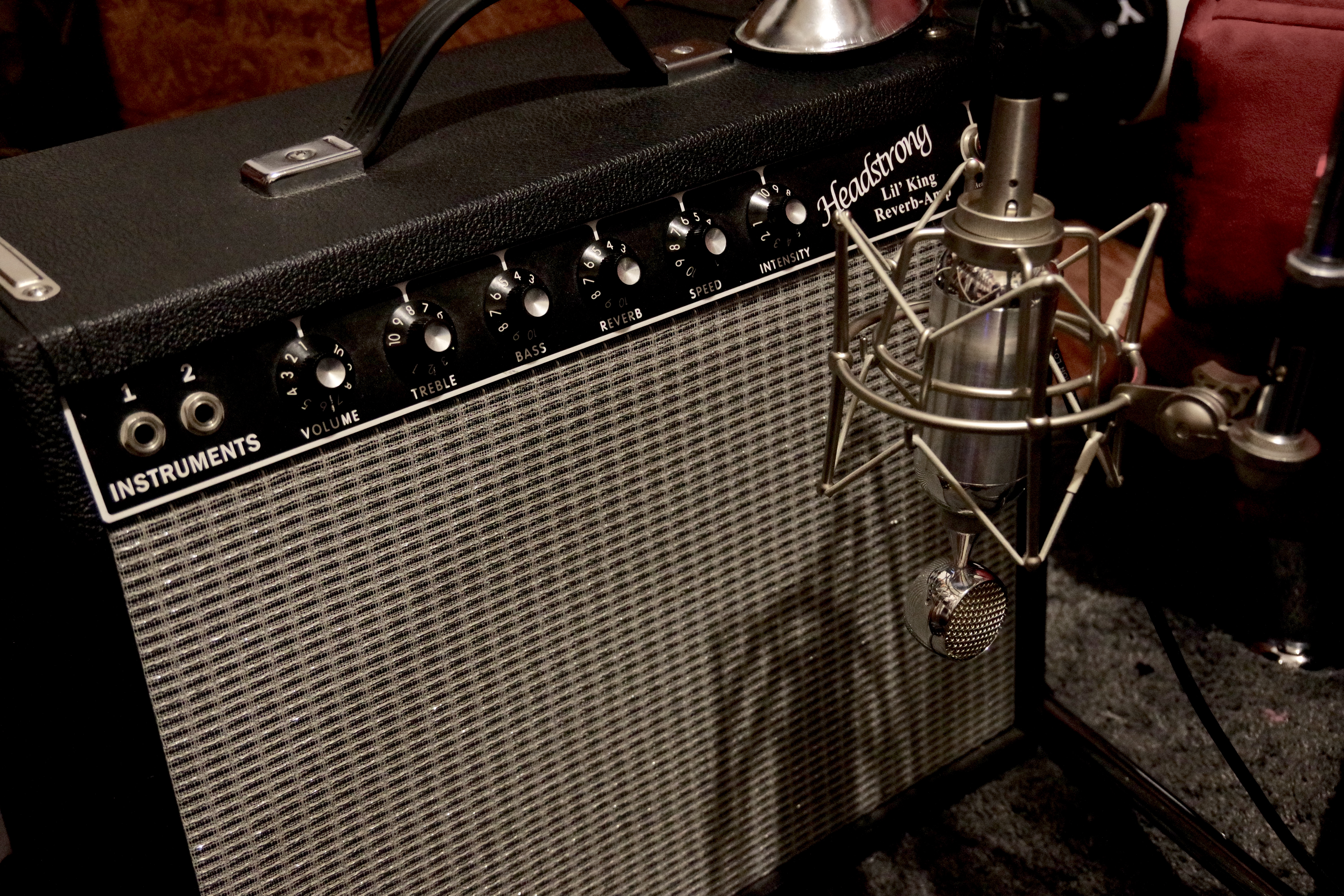
Headstrong ‘Lil King Reverb miked with a Soyuz Bomblet




